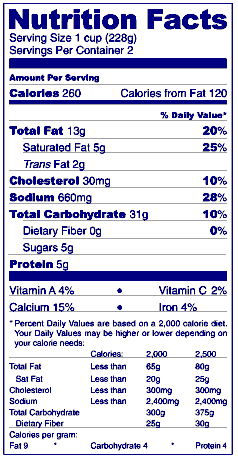Q & A
06/24/2005
Furci Home / Fitness Channel / Bullz-Eye Home
Q: Hi Mike,
I'm currently 24, 190lbs, 5-8. I'm looking to drop all this extra fat, and build
up strength and endurance. I've been reading your articles, and I've read through
dozens of magazines, articles and the like, looking to find advice and solid
information. Unfortunately, a lot of it seems to be contradictory, or it assumes
a lot of pre-knowledge. There doesn't seem to be much in the way of articles
or guides for starting to bodybuild.
So, my main question: Where should I begin? Is there a specific website that
you recommend for neophytes? I've been hitting the gym, doing a mix of low-intensity
cardio and high-intensity weights, but some sites recommend nearly cutting cardio
completely. Will working solely on building muscle mass burn enough fat to (eventually)
get some definition? Diet-wise, I've been cutting carbs and eating more protein,
and I'm cutting out sugar as I go. You recommend 1g/lb -- for me, that's nearly
2kg of protein a day. I'm a meat-lover, so that's not sounding like such a bad
thing, but damn, that seems like a helluva lot of meat! Are there other sources
of protein you recommend?
Cheers,
James
Vancouver, Canada
A: Where should
you begin?
It looks like you are off to a good start. However, like
so many people who write for advice, you didn't include your
current workout. It's impossible to give people my best advice
without this info. Having said that, let's break it down.
Should you still perform cardio? In my opinion it's completely overrated. The
benefit-to-work ratio is piss poor. Despite what you're told in most magazines,
books and TV, cardio done in a traditional manner yields little to no results
(as far as changing the way one looks). By traditional, I mean moderate paced
walking to moderate jogging. The lack of results is especially evident in persons
who engage in aerobic activity and do not change their diet. When I see somebody
on TV claiming that they lost 30 pounds solely by walking on the new
"thingamajig" for 20 minutes a day, three days week, I think to myself,
what a lying sack of shit.
If you are going to do cardio you need to get the best bang for your buck. How
do you do this? Interval training. It is the best way to perform cardio by far.
Intervals burn the highest amount of calories in the least amount of time and
continue to burn at a higher level well after (some studies suggest 24 hrs) the
exercise is discontinued. In order for your cardio training to be successful,
it must be intense. Intensity is the key, not only for fitness levels but for
calories burned. This is the single biggest deterrent to performing intervals
-- it's difficult. Here are a couple of interval
workouts if you feel the need to keep cardio in your workout.
To answer another question you have, yes, working solely on building muscle mass
will make substantial inroads to losing body fat. Muscle drives our metabolism.
Gaining three to five pounds of muscle mass will raise the average man's metabolism
six to 10 percent, depending on genetics. This increase in metabolism is 24/7.
Cardio will not have this result. However, if you’re eating burger King three
times a day, no amount or type of training is going to help you obtain a lean
look.
You say you perform a high-intensity weight training routine. The higher the
intensity, the greater the growth response. This type of training has to be tempered
with optimum recovery. We all recover from exercise at different rates. Many
people who recover quickly have reached a high level of success performing a
high number of sets and exercises. Many who recover slowly have also been very
successful performing low numbers of sets and exercises. Because everybody is
unique in their ability to adapt and recover from different programs, the number
of sets, reps and training frequency needs to be individualized. Monitoring your
strength is the best way to determine recovery ability.
Strength should always be your goal. I can’t stress this enough. The heavier
the weight lifted, the greater the muscle tension. The higher the level of muscle
tension, the greater the growth response. But, like I always tell my clients:
“Leave your ego at the door.” Strength is relative. What might be heavy for one
may be light for somebody else. Do not compare yourself to others. Compete against
yourself on a daily, weekly, monthly and even yearly basis. Keeping a detailed
journal will help ensure that you’re moving in the right direction.
James, I would like you to read "A No-nonsense Guide to Designing Your
Workouts," parts one, two and three.
This will give you a great base and get you started in the right direction toward
a productive progressive resistance routine.
By the way, 2g/lb of body weight yields 380gm of protein per day for you, not
2000gm. Get your protein from different sources, including fish, lean red meat,
cottage cheese, turkey breast, chicken breast, eggs and protein powders.
|
|
Q: Hi Mike,
You stress the importance of "recovery time" in many of your articles, and how it varies on the individual person. At what point are a person's muscles "recovered"? Is it when it's completely free from being sore or entirely something else?
Also, what kind of eating regiment would you recommend during the "off" days when you don't work out?
I have learned a lot from your articles and appreciate your no bullshit approach to physical fitness.
Regards,
James Lee
A: James,
Allowing for recovery is of supreme importance. Without adequate recovery time, you will not be successful in your quest to build muscle and strength no matter what your diet consists of or what workout you perform. We all recover at different rates.
Some recover fast and can train every body part intensely once every four days and still make great progress. Others (actually, most of the general population) require more time. Most people will need between six and nine days between training the same body part to fully recover. Finding the optimum amount of recovery time is not easy. It takes trial and error. And there are many variables, including genetics, diet, daily stress, sleep habits and other physical activities. The best way to discover what works and what doesn't is to use a training log.
Using a training log is imperative to make the best gains possible and to keep making gains long into the future. Record your daily workouts. Record your food intake and dietary habits. Also include how you felt on a particular day. Include how you felt during your workout. There are guidelines for working out and proper nutrition, but each body responds differently. You need to track what works for you, and what doesn’t.
It’s not easy. There is no magic pill. There is no workout machine. There is no special herb or anything to make this an easy task. Anyone who says that a product can make it simple and easy is full of it. You must make a commitment.
James, set your goal, chart your course, make the commitment, and monitor your progress. Take the time. Do it for yourself. Make working out and eating well part of your lifestyle. Make them as much of a priority as brushing your teeth and washing your hair.
Q: Hi Mike,
First of all, after reading so much information on the web about weight training and nutrition, your articles have been a breath of fresh air. I did notice this week that you wrote someone not to waste their time with Nitric Oxide. However, in a March 17, 2004 response you wrote that Nitric Oxide products are a "good bet." Did your further research reveal that Nitric Oxide is a waste of time for most?
My real questions are... what do you think about the benefits of taking CLA and do you have any suggestions for pre and during weight training session supplements and/or drinks?
Thanks so much for your time.
Vince
A: I unfortunately fell into the trap of supplement propaganda. Instead of waiting to see if in fact the supplement worked and viewing the research behind NO (nitric oxide), I jumped the gun. After looking at the product in-depth I concluded that it's worthless. In order to get the effects the companies selling NO claim are possible, you would have to up your dosage to a level that would cause extreme gastric distress, more commonly known as the shits. Intravenous infusion would be the only route that would allow the correct amount of NO to be delivered.
What do I think of CLA? CLA was said to possess some wonderful properties. Unfortunately, it has not lived up to the hype. It has been shown to reduce body fat in animals. CLA seems to have an inhibitory effect on the enzymes that build fat while having an opposite effect for enzymes that release fat. Like many compounds that work for animals, CLA did not have the same effect on weight-trained men. The problem is that it takes a lot of CLA to work. Some literature claims it takes between seven and 15 grams to get any effects, which makes the cost outrageous. Leaning-out with CLA isn't going to happen.
The best advice I can give you concerning fat is to increase your intake of omega 3s like EPA and DHA (fish oil), reduce your consumption of omega 6s and eliminate trans fats. If you want to increase your overall health, prevent heart disease, cancer, depression and Alzheimer's. Maybe you need to treat rheumatoid arthritis, diabetes, ulcerative colitis and a host of other diseases. One of the most important things you can do for all of these is increase your intake of the omega-3 fats found in fish oil and cod liver oil, and reduce your intake of omega-6 fats.
These two types of fat, omega-3 and omega-6, are both essential for human health. However, the typical American consumes far too many omega-6 fats in their diet while consuming very low levels of omega-3. We evolved on a fairly high fat diet. The problem is that the types of fats we were eating back in the Paleolithic days were quite a bit different from the fats we eat now.
In the Paleolithic era, our ratio of omega 6s to omega 3s was very close to 1:1. We ate like this for millions of years. These days it has been suggested that this ratio is 30:1 up to 50:1! So why should we be concerned? The change in the ratio of omega 6 to omega 3 plays a role in pretty much every major disease that's killing us in Western civilization. The primary sources of omega-6 are corn, soy, canola, safflower and sunflower oil. These oils are overabundant in the typical diet, which explains our excess omega-6 levels. Avoid or limit these oils. Omega-3, meanwhile, is typically found in flaxseed oil, walnut oil and some fish.
By far, the best type of omega-3 fats are those found in fish. The reason is the omega-3 in fish is high in two fatty acids crucial to human health, DHA and EPA. These two fatty acids are pivotal in preventing diseases as mentioned earlier. The human brain is also highly dependent on DHA -- low DHA levels have been linked to depression, schizophrenia, memory loss and a higher risk of developing Alzheimer's. Eat more salmon, Vince.
 Trans
fats contained in hydrogenated oils, to put it bluntly, are a poison in our food
supply. The National Institute of Health has funded more than $100 million on
three studies at Harvard University. All three studies show unequivocally that
the risk of heart disease correlates to the consumption of trans fats. Trans
fats are completely artificial and bear no resemblance chemically, physically
or nutritionally to pure oil. What about saturated fats and heart disease? We've
been told over and over that heart disease would be halted if we lowered our
consumption of red meat, butter and eggs. The problem is the studies that supposedly
show a definite link between heart disease and saturated fat was funded by Proctor
and Gamble, Mazola and Wesson, and Fleischmann's. These are the very companies
that would benefit most through their production of hydrogenated oils for products
like margarine and Crisco.
Trans
fats contained in hydrogenated oils, to put it bluntly, are a poison in our food
supply. The National Institute of Health has funded more than $100 million on
three studies at Harvard University. All three studies show unequivocally that
the risk of heart disease correlates to the consumption of trans fats. Trans
fats are completely artificial and bear no resemblance chemically, physically
or nutritionally to pure oil. What about saturated fats and heart disease? We've
been told over and over that heart disease would be halted if we lowered our
consumption of red meat, butter and eggs. The problem is the studies that supposedly
show a definite link between heart disease and saturated fat was funded by Proctor
and Gamble, Mazola and Wesson, and Fleischmann's. These are the very companies
that would benefit most through their production of hydrogenated oils for products
like margarine and Crisco.Approximately 40 percent of supermarket foods contain trans fats. If the ingredients list "hydrogenated vegetable oil," "partially hydrogenated vegetable oil" or "shortening," don't eat it. However, this is not fool proof. The FDA final rule on trans fats will require that the amount of trans fat in a serving be listed on a separate line under saturated fat on the Nutrition Facts panel (right).
Food manufacturers are allowed to list amounts of trans fat with less than 0.5 gram (1/2 g) as 0 (zero) on the Nutrition Facts panel. As a result, consumers may see a few products that list 0 gram trans fat on the label, while the ingredient list will have "shortening," "partially hydrogenated vegetable oil" or "hydrogenated vegetable oil" on it. This means the food contains very small amounts (less than 0.5 g) of trans fat per serving.
Questions or comments? Send them to mike@bullz-eye.com.
You can follow us on Twitter and Facebook for content updates. Also, sign up for our email list for weekly updates and check us out on Google+ as well.







